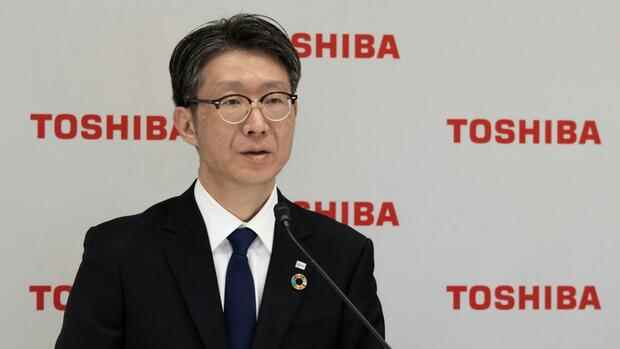Tokyo Taro Shimada used to head the digital factory division for Siemens in Japan. Since this month, as head of the traditional Toshiba group, he has been responsible for the most complicated restructuring case in Japan – which became even more difficult on Thursday.
Because the shareholders rejected the proposal of the board of directors to split the company into two parts. “Based on the opinions of shareholders, we will examine all strategic options to increase the company’s value,” Shimada promised.
The long-standing crisis of the Toshiba conglomerate is entering a new round. This was the second plan that failed with the shareholders. In 2021, a strategy committee made up of non-company directors proposed a tripartite division in order to increase decision-making speed and company value. In February, after an outcry from activist funds, the board of directors put forward the idea of continuing Toshiba as an infrastructure company and spinning off electronics and semiconductors.
Now, in a battle of differing interests, Shimada has to come up with a new plan to breathe new life into the 146-year-old company.
Top jobs of the day
Find the best jobs now and
be notified by email.
On Thursday, the shareholders also rejected the proposal of the major shareholder 3D Investment Partners that the board of directors should examine in particular the privatization of the group through a sale to investors. This dismissed at least one scenario that worries Japan’s establishment: the filleting of the corporation.
Toshiba is “a treasure trove”
“I am pleased that the delisting was rejected,” says Hideki Wakabayashi, professor of technology management at Tokyo University of Science. The proposed dichotomy is also double-edged swords for him. “But in any case, there is no show like the butchering of a tuna.”
After all, selling the group’s best pieces to the highest bidder would be a possible and possibly lucrative strategy that a private equity fund could pursue. After all, Toshiba, as a traditional conglomerate, has many divisions that could still be turned into silver. Or as CEO Shimada put it when he took office: Toshiba is “a treasure trove”.
This week, the Chinese group Midea and the US group Otis were brought into play as possible buyers for Toshiba’s elevator division. But Shimada, as a digital expert, does not see the parts as sales objects, but as a large whole that can be used to restart the group. “If we can get the technology inside to work, we will certainly be able to make a comeback,” he promised.
Jesper Koll, director of the online broker Monex Securities, sees the defeat of the board of directors as the “best result for Shimada. Now he can show true leadership, Toshiba’s future is in his hands, not in the hands of the shareholders.” And Koll believes Shimada is capable of stabilizing the teetering group again. “Shimada is one of the very few Japanese leaders who can hold his own in a discussion with Elon Musk or Peter Thiel.”
Toshiba is a deeply insecure company
The promised one is aware of his role. “I am Toshiba’s first president who understands digital technology,” he said on March 1. His predecessor, Satoshi Tsunakawa, was a company insider who paved the way for Shimada. His predecessor, in turn, was an investment banker who poached Shimada from Siemens in 2018 before shareholder activists chased him out of office.
>>> Read here: Toshiba boss resigns in dispute over corporate restructuring
The newcomer at the top has to move a deeply insecure company that has staggered further and further into crisis since the Japanese nuclear disaster in 2011. With the meltdown in Fukushima, the large nuclear power plant division also experienced its catastrophe. In 2015, an accounting scandal was also discovered that destroyed Toshiba’s reputation.
In 2017, the group itself was almost ruined by the bankruptcy of its American nuclear power plant subsidiary Westinghouse. Toshiba was only able to save itself by selling its highly profitable memory chip division, which is now Kioxia. Since then, the management has been trying to develop a functioning business model from the rest ramp.
With a profit margin of 3.7 percent in the first nine months of the financial year that ended at the end of March, this negative series has at least come to an end. But the constant dispute with the shareholder activists about the right way makes the work more difficult. But Koll hopes that Shimada can now repeat at Toshiba what Kazuo Hirai did at Sony.
Hirai took over Sony during a deep crisis and laid the foundation for today’s record earnings. But the challenge is great, as Koll also knows: “Shimada has to develop charisma and actually lead Toshiba with its own vision, instead of just following confused shareholders.”
More: After strong criticism, the Japanese conglomerate has revised its strategic plans
